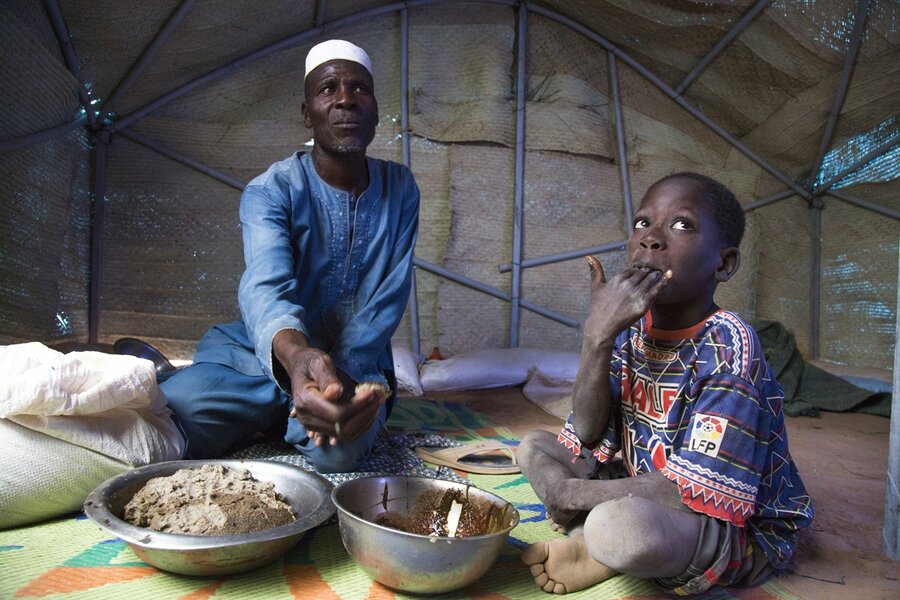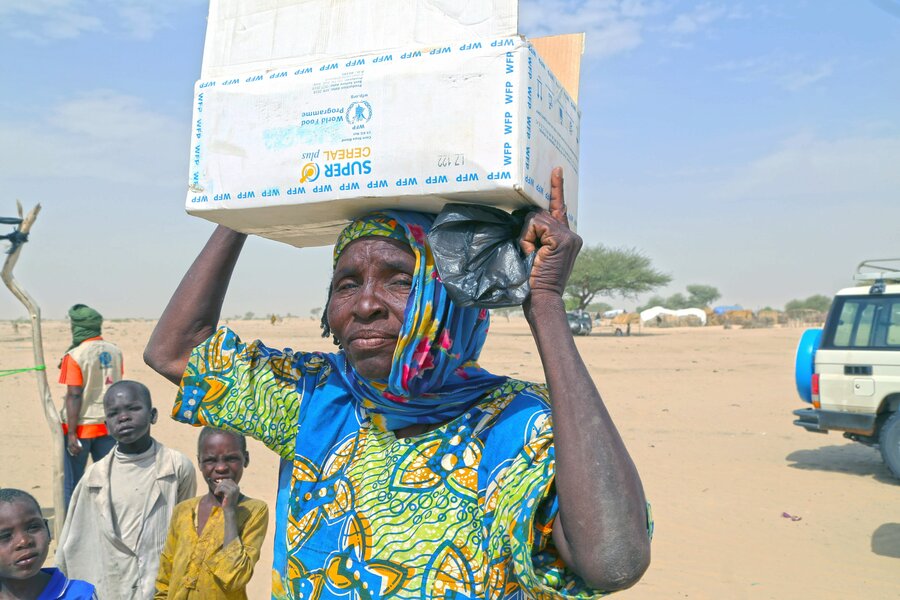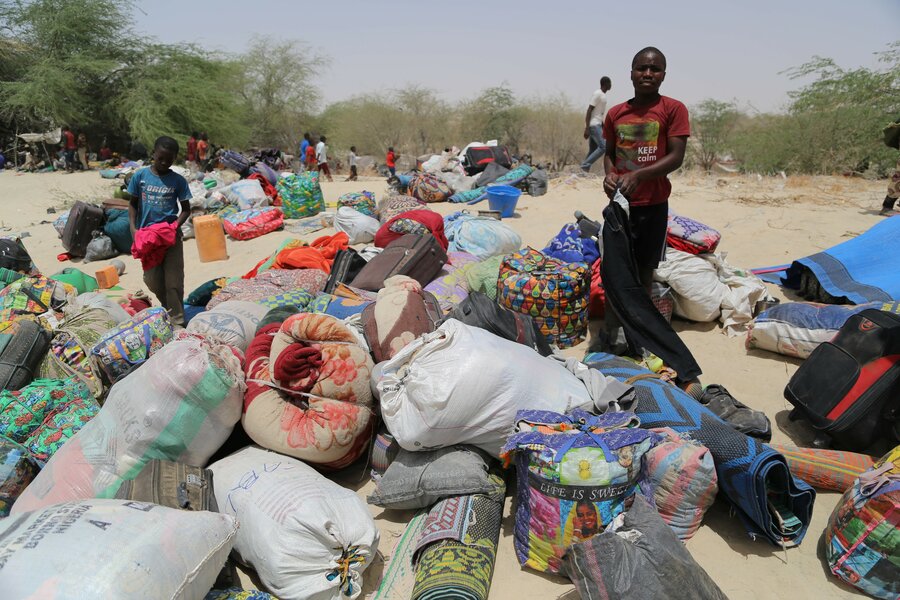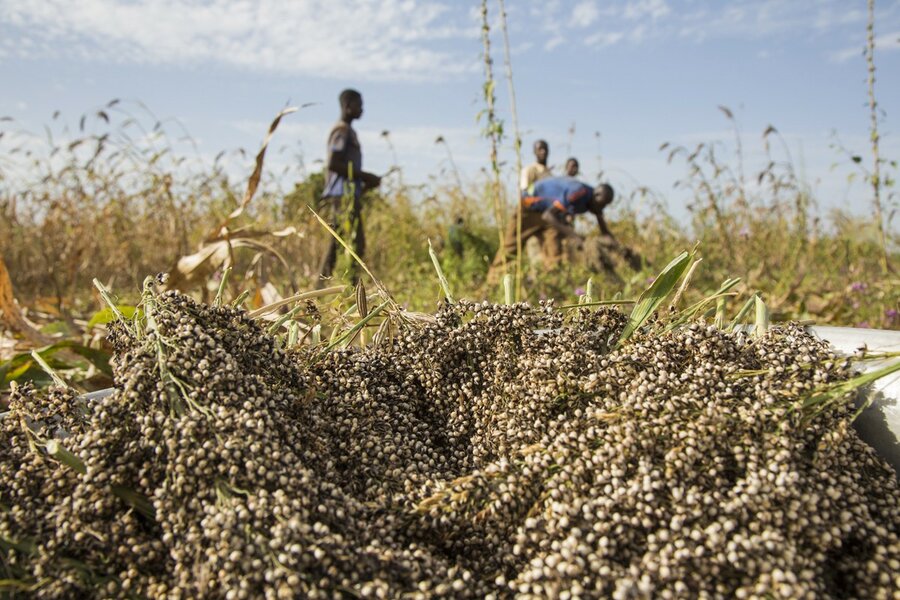Five things to know about spiralling insecurity in the Sahel
In the Central Sahel countries of Burkina Faso, Mali, and Niger, conflict and violence are exacerbating the effects of climate change on people's food security. The World Food Programme (WFP) is supporting 1.4 million people across the three countries — 950,000 of whom have been displaced by conflict — with vital food assistance. WFP plans to expand operations to assist 4.8 million people by December. You can help by donating now.
Over past months, humanitarian organizations have repeatedly warned of deteriorating security across three countries of the Central Sahel — Burkina Faso, Mali and Niger. But what does that actually mean for those, civilians and humanitarian personnel alike, on the ground? We asked Caroline Bantchev, a security analyst who advises WFP management and field staff in the region. Here are five things we learned:

1. ‘No day without news of an attack'
A proliferation of non-state armed groups, counter-insurgency actions by state forces and international partners, and the creation of armed self-defence groups at village level — notably in central Mali and Burkina Faso, have created a fireball of conflict that is engulfing most of the Sahel region. Violence has its epicentre in the so-called tri-border area between Mali, Burkina Faso and Niger, and is spreading fast. Existing ethnic tensions have been exacerbated by rising insecurity.
"Basically, not one day goes by without a report of an attack on a security post," says Bantchev. "The anatomy of the attacks has evolved. Before, it used to be a few men attacking an isolated army or gendarmerie post and then retreating. In the past months, however, we have seen highly coordinated attacks that have taken a heavy toll on the security forces. The last major attack on the Mali-Niger border in January alone left at least 89 Nigerien soldiers dead."
According to firsthand accounts, in a typical attack groups would storm a military base from different angles, with columns of motorbikes and pickup trucks transporting hundreds of armed people. Armed groups started using car bombs to breach the entrance of a military base. This creates chaos and allows armed men to enter the premises. Groups are also imposing taxation on villagers.

2. ‘Civilians are increasingly targeted'
In all three countries, security forces were until recently the primary target of attacks. However, as the conflict is evolving — including with the involvement of local militias and inter-communal violence deliberately aimed at specific ethnicities and groups — the number of civilian victims is increasing dramatically.
"Civilians were initially ‘collateral damage' — a case of being in the wrong place at the wrong time, during an attack on security forces or a counter-insurgency operation," says the analyst. "But more and more, we see civilians being targeted, intimidated, harassed or killed, by conflict actors who accuse them of siding with the opposite side."
In Burkina Faso, there have been killings aimed at religious communities, with attacks on churches but also on clerics who are deemed insufficiently radical. Armed groups also target representatives of the state as well as local chiefs. This mostly happens because armed groups want to stir tensions between communities, furthering their agenda of destabilizing to project the image of a weak government, unable to provide security.

Abductions have also been on the rise. While some have targeted westerners, it is mainly locals who get kidnapped for ransom or as a form of intimidation. The abductions of many local village chiefs in Western Niger are believed to be a way to generate fear and prevent the population from protesting or seeking help against the armed groups — people have either been released once a ransom is paid, or killed.
3. ‘They don't even trust their neighbours any longer'
Insecurity has quickly translated into everyday fear. People live in constant apprehension that an armed group might attack their village and kill their children. Rumours about potential, actual or fake attacks in distant communities spread like wildfire.
"People don't know who to trust. They don't know who to believe," Bantchev says. "People who were on good terms with their neighbours are now scared and pointing the finger at each other. This cycle of hate that has been spreading is probably one of the most dangerous features of the tragedy unfolding in the Sahel."
4. ‘Villages are emptying up'
Villages in areas hit by violence are emptying up. More than 950,000 people are now internally displaced within Burkina Faso, Mali and Niger. They have left their fields and now depend either on the help of host communities — who themselves are deprived — or on government and humanitarian assistance, where it is available. Teachers have been repeatedly intimidated and threatened, forcing many to flee while schools have closed. In Burkina Faso, 2,000 schools have been closed, disrupting the education of more than 300,000 children.

5. ‘A terrible fate also for those who do not flee'
People who stay behind — often the most vulnerable such as the elderly or families with young children — face a difficult context. Poor access for humanitarian organizations means they are often cut off from help. They are subjected to taxation and extortion at the hands of armed groups and militias. During counter-insurgency operations, they are often suspected of consorting with the armed groups.
Security measures such as the ban on the use of motorbikes in parts of Burkina Faso, Mali and Niger are making life even harder for people. "Motorcycles are used by armed groups, but they are also the main means of transportation for villagers to reach markets, farms, hospitals," adds Bantchev.
Beyond these everyday problems, the danger of witnessing violence while growing up raises serious concerns for younger generations in the Sahel. Bantcheve warns: "A young boy or girl for whom violence has become a normal part of life risks believing that his or her fate can only be determined through violent means."
